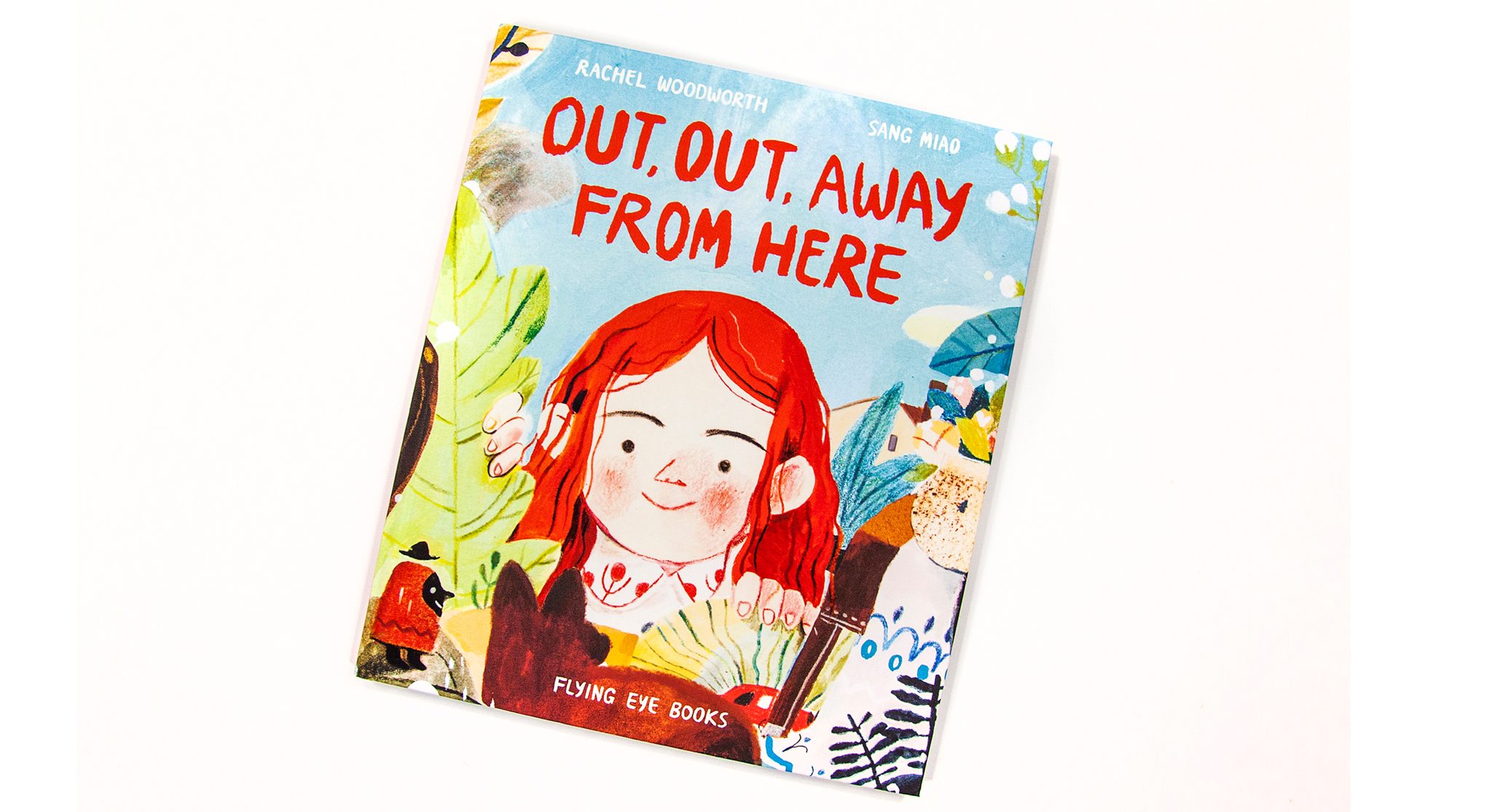
By Rachel Woodworth
As a child, my personality was quiet and reserved, but my feelings were noisy. I was a stomper and a door-slammer — tucked in the middle of the sibling order. In retrospect, I see those characters from the animated movie, Inside Out sitting at the dashboard, haphazardly pushing buttons and battling for control. They acted independently of me, and they longed for expression — longed to be seen and heard (ahem — stomp, stomp). They often appeared in writing: in notes and stories, in journal entries and, as a small girl, in posters strewn across the house for my parents to find, depicting my honest, and probably unhelpful, feelings regarding the discipline of practicing piano (“I HATE PIANO”).

Sharp edges soften. That angry sadness, along with its note-scrawling, door-slamming and foot-stomping, finds a fullness of expression and, often, a quietness. That once-slammed door is sheepishly opened. This is the arc that my first picture book, Out, Out, Away From Here (illustrated by Sang Miao), follows. The story moves readers from the fullness of that noisy feeling — of MAD-SAD-GLAD — to a peace and quiet that we can all find within the space of our own imaginations. No matter how small, we all need to learn emotional intelligence, and that requires practice, care, and patience.
Though I don’t have formal child psychology training, I have spent a lot of time with children, teaching them and learning from them, in daycares and preschools, as a private tutor, as a homeschool teacher. Children have a lot to teach us. They navigate the world with lighthearted wonder, with honest and direct thought and feeling, and with an attention to the present moment. As we teach and care and parent them, we have much to learn from them — to learn together.
How do we encourage emotional intelligence in young children? How do we empower kids to cope with and carry feelings in healthy ways?
1. Remember, Feelings Begin Physically
Tantrums, stomping, frowning, fist-clenching. Identifying feelings is a challenge for all of us — grown-up or not. Young children may only know how to verbally express happy, sad, and mad. While still learning ways to channel and show these feelings, they will express themselves physically. We can help children to identify the clues their bodies/behaviors give them about those unnamed feelings.

2. Encourage, empower, and guide children to name their own feelings
Ask open-ended, exploratory questions. Try to veer away from questions with yes/no answers. Example: How are you feeling? What happened to make you feel this way? What can we do to calm you down or cheer you up?
3. Affirm that feelings are legitimate
Feeling sad, tired, grumpy, nervous, excited — these feelings are real and often important. Let children know that this is normal and okay, that adults feel these too. Share your experiences and strategies with children. When you’re feeling a certain way, how do you cope? We may not choose our feelings, but we can choose how to express them. My parents’ repeated advice was this: “you may be feeling this way, but you don’t need to act this way” (this was usually tired and grumpy, they were referring to).
4. Allow space
Children need access to the outdoors to experience the quiet, beauty, and wonder of nature. Feelings need room to spread out.

5. Step back
In the midst of noisy feelings, children and caretakers can benefit from a pause. “Taking five” was a tool I used in the classroom to allow students (often frustrated and unproductive) five minutes to use in their own, quiet way — often with a pile of books. They, and I, often returned to the task more calm and ready.
6. Read illustrated books aloud
This medium offers children language higher than their level of expression — but not their level of understanding. Books give kids a greater ability to hold and communicate feelings.
7. Give feelings feet!
Encourage children to let their feelings move. If they’re happy feelings — or any sort of feeling, really — dance! As an adult, too, I have to remind myself to sometimes leave my brain and heart behind. Take a walk, write in a journal, create art, play. Move!

8. Help children to recognize that feelings are temporary
A wise friend of mine says you feel feelings — but you aren’t your feelings. Imagine them like visitors. How can we take care of them while they’re here? What can we learn from them? They’ll show themselves out, when they’re ready. They’ll come and go again.
9. Teach that caring for ourselves helps us to care for others
Learning to recognize and care for our own emotions is a necessary precursor to practicing compassion. Encouraging children to know and recognize their own feelings will help them to observe the same in others — and to practice compassion.

10. Remind children that feelings are complicated and that it’s okay
Feelings are often more muddled-up than happy, sad, or mad, but that makes it so important to talk through them.

The world of feelings is wonderful and complicated. It’s a world we all carry within us, child and adult alike. Guiding children to carry their emotions in appropriate ways will lead to healthier children and, someday, healthier adults — capable of caring for themselves and for others. Join me in a journey we all take, over and over again, out, out, away from here — through that mountainous terrain of feeling.

(Art by Sang Miao, © Flying Eye Books)
Download your own copy of this poster: low-res, or high-res.
Rachel Woodworth grew up in Canada and graduated from a liberal arts university in the United States. With an ongoing wonder with words and the world, writing has accompanied her for the whole of her travels. Out, Out, Away From Here (published by Flying Eye Books) is Rachel’s first book and is available now. She is currently living in Tanzania.